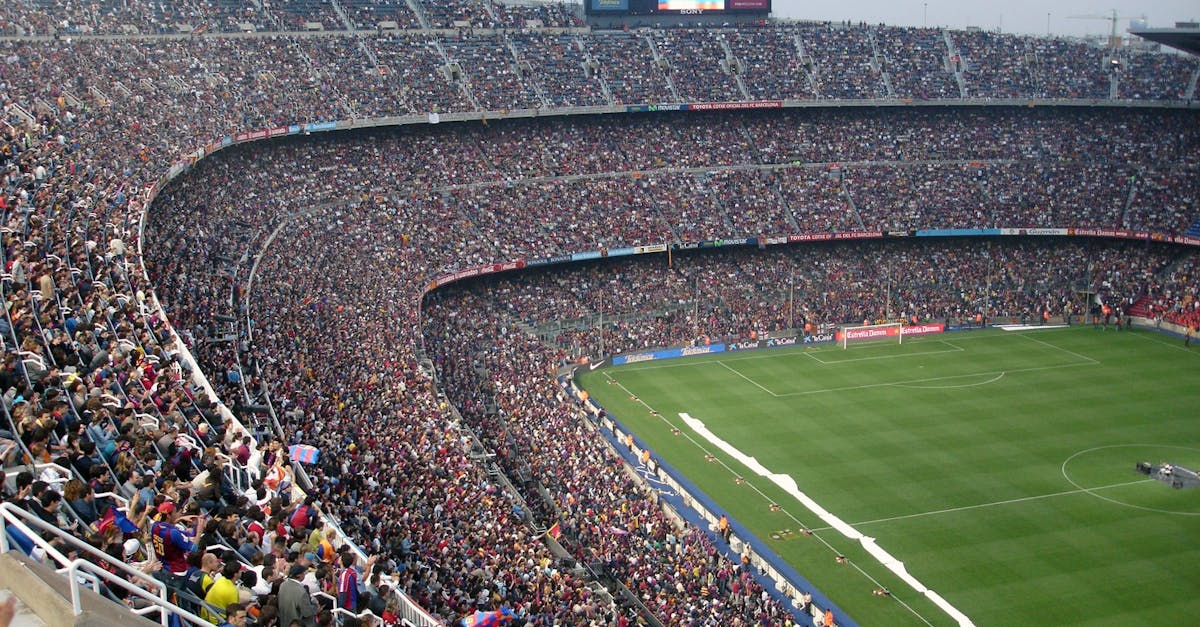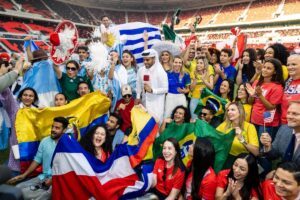How the World Cup Unites Nations: 15 Stories of Football Bringing People Together
In a world often divided by politics, borders, and conflicts, the FIFA World Cup stands as a rare beacon of global unity, and it is incredible how the World Cup unites nations. For one month every four years, the shared passion for football transcends differences, bringing nations together in celebration, mutual respect, and sometimes, unexpected harmony. It’s more than just a game; it’s a powerful force for connection.
While rivalries run deep, the tournament consistently produces moments and stories that highlight our shared humanity. Fans travel across continents, mingle in host cities, learn about different cultures, and bond over the drama unfolding on the pitch. Even brief ceasefires have been called in conflict zones during past World Cups. These instances showcase football’s unique ability to unite nations and foster global understanding.
Here are 15 stories and examples of how the World Cup unites nations:
1. Shared Viewing Experiences Globally
Billions watch simultaneously. Whether in packed stadiums, crowded pubs, public viewing areas, or family living rooms, the act of watching the same event unfold creates a powerful, shared global experience, connecting people across time zones and cultures through collective cheers and groans.
2. Fans Mingling in Host Cities
Host cities become vibrant melting pots. Fans from dozens of countries converge, draped in their national colours, singing chants, and interacting peacefully. Streets fill with a carnival atmosphere where language barriers often dissolve through shared smiles, gestures, and the common language of football passion.
3. Ceasefires and Temporary Truces
Remarkably, past World Cups have seen temporary ceasefires called in conflict zones. Notably, in 2006, warring factions in Ivory Coast reportedly laid down arms to watch their national team play in its first World Cup, inspired partly by star player Didier Drogba’s plea for peace after qualification.
4. Cross-Cultural Fan Friendships
Countless stories emerge of fans from rival nations befriending each other during the tournament. Sharing drinks, exchanging scarves, posing for photos together – these small interactions build bridges and break down stereotypes, fostering goodwill between people from different backgrounds.
5. Global Support for Underdog Nations
When smaller nations achieve unexpected success (like Iceland in 2018, Ghana in 2010, or Costa Rica in 2014), they often gain support from neutral fans worldwide. People love an underdog story, and rallying behind a less-fancied team creates a sense of shared hope and excitement that transcends national allegiances.
6. Players as Ambassadors for Unity
Footballers themselves often act as powerful symbols of unity. Players from diverse backgrounds representing one nation, or stars using their platform to advocate for peace and understanding (like Didier Drogba), showcase football’s potential to bridge divides.
7. Learning About Other Cultures
The World Cup is an educational experience. Fans learn about the geography, culture, and history of participating nations they might otherwise know little about. Media coverage often includes cultural segments, broadening perspectives and fostering global awareness.
8. The Office Sweepstake Phenomenon
A simple office pool or sweepstake brings colleagues together, giving everyone a team to root for (even if it’s not their own) and sparking conversations and friendly banter, fostering camaraderie in workplaces around the world.
9. Iconic Moments of Sportsmanship
While controversies exist, the World Cup also features moments of great sportsmanship – players helping injured opponents, consoling defeated rivals, or fans applauding opposing teams – that highlight shared values and mutual respect across nations.
10. Shared Joy (and Heartbreak)
The raw emotions of the World Cup – the elation of a last-minute winner, the agony of a penalty shootout loss – are universally understood. Sharing these intense feelings, even with strangers supporting the same team, creates powerful bonds.
11. The Rise of Pan-Continental Support
Often, fans will support other teams from their continent once their own nation is eliminated. This sense of shared regional identity (e.g., African nations supporting Ghana in 2010, South American nations backing Argentina or Brazil) demonstrates a broader unity beyond national borders.
12. Global Media Connecting Fans
Wall-to-wall media coverage and the rise of social media allow fans worldwide to follow every moment, share reactions instantly, and engage in global conversations about the tournament, creating a virtual global community united by the event.
13. National Holidays and Collective Celebrations
In many countries, significant World Cup victories trigger spontaneous street parties and even declared national holidays. These moments of collective, nationwide celebration are powerful unifiers, bringing people from all walks of life together in shared joy.
14. Breaking Down Political Tensions (Temporarily)
Even between nations with strained political relations, a World Cup match can offer a temporary respite. The focus shifts to the pitch, and while rivalry remains, the shared participation in the global event can subtly humanize the “other side,” even if only for 90 minutes.
15. Inspiring the Next Generation Globally
Children worldwide watch the World Cup, dreaming of emulating their heroes regardless of nationality. The tournament inspires participation in the sport globally, creating a shared passion that connects future generations across borders.
While not a magic bullet for world peace, the FIFA World Cup consistently demonstrates football’s unique power to unite nations, foster understanding, and remind us of our shared humanity in a way few other events can.
Sources:
- FIFA.com (Football for Hope initiatives, general articles)
- Peace and Sport Organisation (Examples of sport diplomacy)
- BBC News / The Guardian (Articles on Ivory Coast ceasefire 2006)
- UN News (Sport for Development and Peace articles)
- Sociological studies on sport and national identity
- Fan forums and social media discussions during World Cups
- Documentaries on specific World Cups (e.g., “Becoming Champions”)
- News reports on fan interactions in host cities
- Academic articles on globalization and sport



